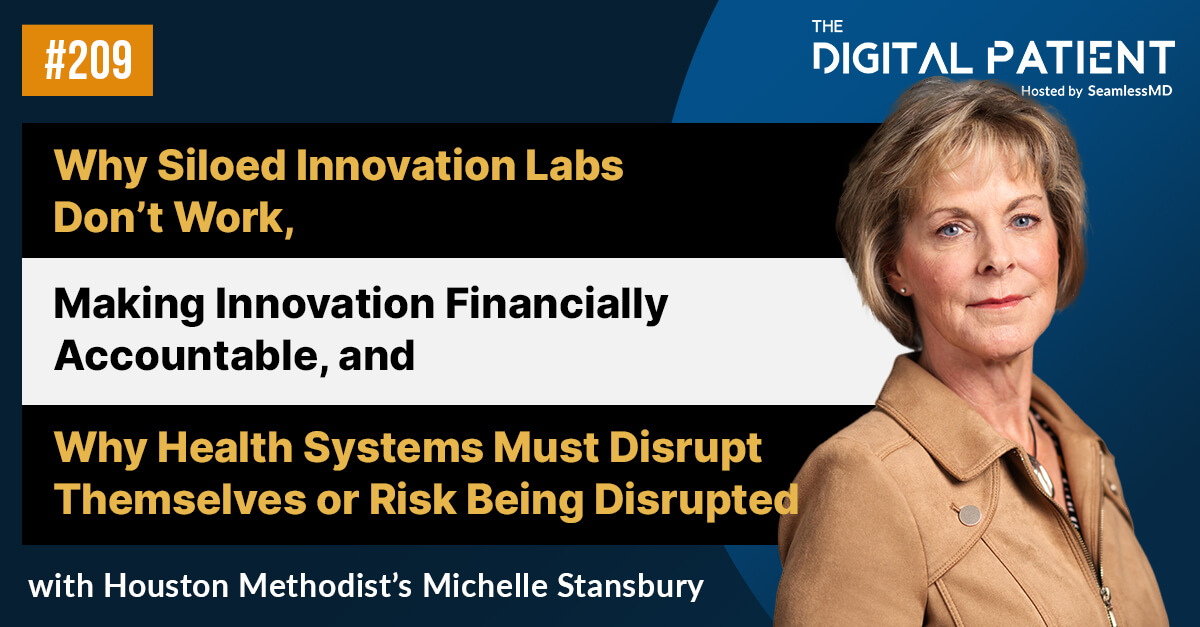Subscribe on: RSS | SPOTIFY | APPLE PODCAST | GOOGLE | BREAKER | ANCHOR
Video:
In this episode of the SeamlessMD Podcast, Dr. Joshua Liu, CEO at SeamlessMD & Marketing colleague, Alan Sardana, review a manuscript from the Journal of Colorectal Disease, "Value of an Interactive Phone Application in an Existing Enhanced Recovery Program"*. See the full show notes below for details.
*Schlund, D., Poirier, J., Bhama, A.R. et al. Value of an interactive phone application in an established enhanced recovery program. Int J Colorectal Dis35, 1045–1048 (2020). https://doi.org/10.1007/s00384-020-03563-5
Guest(s): Dr. Joshua Liu (@joshuapliu), Co-founder & CEO at SeamlessMD
Episode 39 – Show notes:
[1:40] Introducing the manuscript, “Value of an Interactive Phone Application in an Established Enhanced Recovery Program” and its authors: Devan Schlund1, Jennifer Poirier2, Anuradha R Bhama3, Dana Hayden3, Theodore Saclarides3, Bruce Orkin4, Joanne Favuzza5.
[2:28] How SeamlessMD partneredwith Rush in late 2016 for their colorectal ERAS program and why the main goalof this study was to determine the impact of SeamlessMD on ERAS compliance &clinical outcomes (length of stay, readmissions, surgical site infections,total cost of care) since the Length of Stay improvements had plateaued for theERAS program;
[9:18] How participantsincluded all patients undergoing colorectal ERAS surgery between February 2017and July 2018, regardless of whether they opted into the phone application;
[9:40] How patients wouldreceive a patient education booklet provided by trained nurses during apre-operative clinical visit and how they would consent for SeamlessMDfollowing this clinic visit;
[11:10] How 289 patients wereenrolled in the study (147 patients with SeamlessMD and 142 without);
[12:11] How ERAS compliancewas measured for oral intake, solid food intake, % of patients completing bowelprep, and % of patients adhering to ERAS medication;
[12:20] Discussing ERAS Compliance Results:
Oral & solid food intake: No significant change between groups, however, patients with SeamlessMD were trending in the right direction;
Bowel prep completion: 74.8% of patients did bowel prep with SeamlessMD vs. 66.2% without (p=0.059);
ERAS medication adherence: 82.1% with SeamlessMD vs. 76.8% without (p=0.005);
[14:14] Why patientsmight be more compliant with ERAS protocols using digital patient engagement sincethe patient journey is complex and technology helps to distill information intobite-sized pieces and explains context for each protocol (e.g. why bowel prepis important for surgery);
[20:27] Discussing Clinical Outcomes Results:
Readmission rates: No significant variance between groups;
(There was no remotepatient monitoring enabled, which is a strong factor in influencing change inreadmission rates as seen by other SeamlessMD partners);
Surgical site infections (SSIs): 70% reduction in SSIs with SeamlessMD (p=0.019); (3.4% of patients had SSI with SeamlessMD vs. 11.3% had SSI without SeamlessMD);
Length of stay: 2.0 days reduction in mean length of stay with SeamlessMD (p=0.006); (4.4 days avg. with SeamlessMD vs. 6.4 days avg. without);
Total cost of care: $2,386 reduction in total cost of care with SeamlessMD (p=0.024);
($11,560 avg. cost withSeamlessMD vs. $13,946 avg. cost without);
[24:00] Why clinical outcomes may have improved with SeamlessMD because of increased patient compliance to ERAS elements such as the chlorhexidine wash before surgery which would have impacted SSI rates;
[29:09] Discussing the studylimitations:
1. Small sample size(only conducted at one medical institution);
2. Lack of randomization(due to opt-in nature of study);
3. Did not measurecompliance to all ERAS components;
4. (Not a studylimitation but a technological limitation) The group took a hands-off approach anddid not utilize SeamlessMD’s remote patient monitoring capabilities which mayhave reduced readmissions;
1 Department of General Surgery, Rush University Medical Center,
Chicago, IL, USA
2 Rush Alzheimer’s Disease Center, Rush University Medical Center,
Chicago, IL, USA
3 Department of General Surgery, Division ofColon and Rectal
Surgery, Rush University Medical Center, Chicago, IL, USA
4 Advent Health Center for Colon and RectalSurgery, University of
Central Florida, Orlando, FL, USA
5 Department of Surgery, Division of Colon andRectal Surgery,
Boston Medical Center, FGH Building 820 Harrison Avenue, Room
5008, Boston, MA 02118, USA
.svg)









.png)
